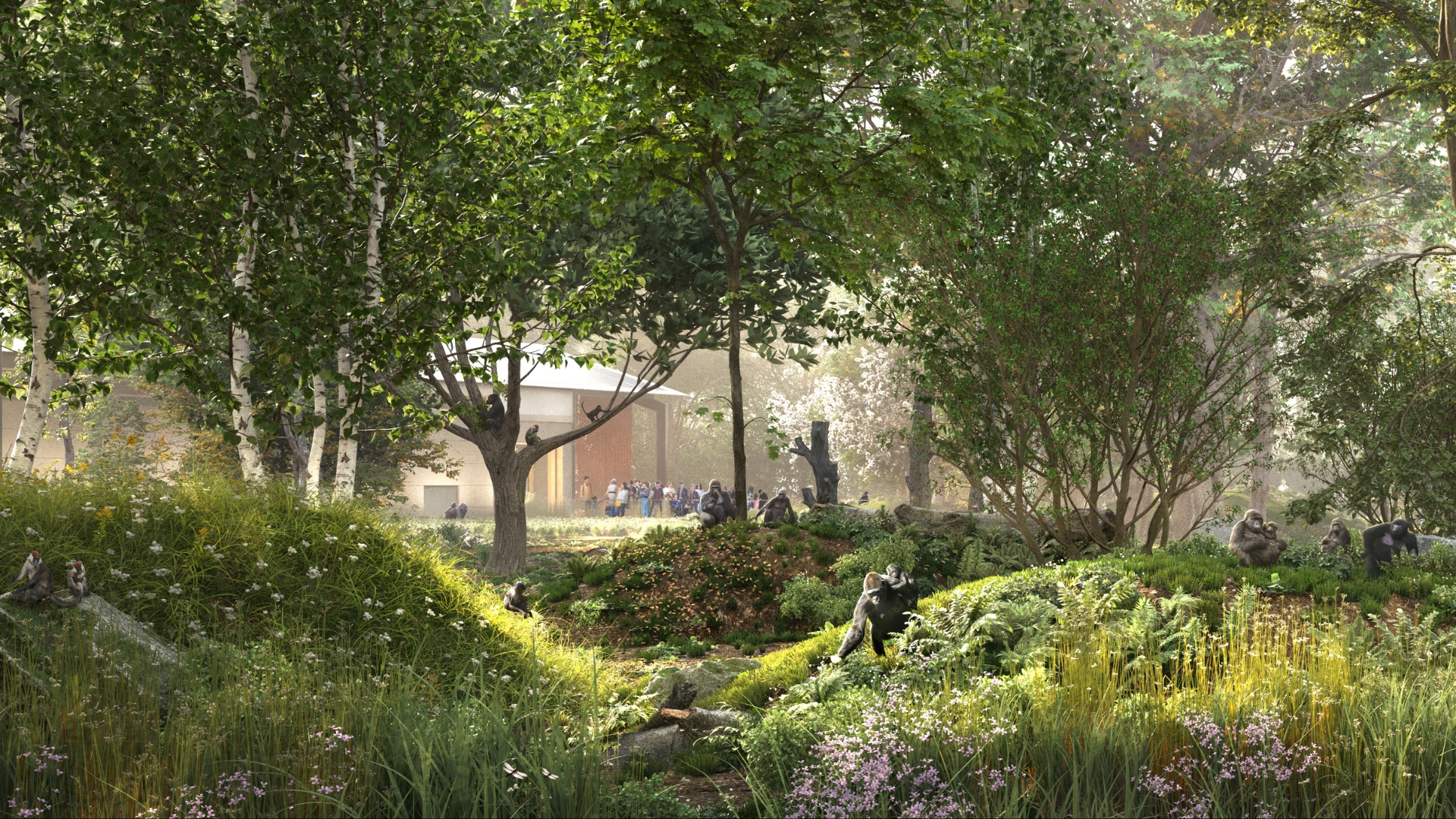Ambitious plans to create a new conservation zoo at Bristol Zoo Project have moved a major step forward as work begins to build a new Central African Forest habitat for the world’s most endangered species.
The first turf has been cut for the new habitat, which will see the much-anticipated arrival next year of the zoo’s existing troop of Critically Endangered western lowland gorillas. They will be joined by Endangered cherry-crowned mangabeys in a UK zoo first for the two species.
Central African Forest will also become home to Critically Endangered slender-snouted crocodiles, Endangered African grey parrots and several extremely threatened species of West African freshwater fish, which visitors will be able to see in a special underwater viewing area.
When the habitat opens in spring 2025, the gorillas and mangabeys will be living in an area four and a half times the size of the gorilla troop’s current home at the former Bristol Zoo Gardens. Central African Forest will make the most of the wooded area of the zoo’s 136-acre site in South Gloucestershire. It has been designed to evoke a sense of the dense forest and landscape of Equatorial Guinea, where the Society runs one of its largest conservation projects focused on gorillas and other threatened forest species.

Image: Artists' impression of the new Central African Forest habitat at Bristol Zoo Project, credit Feilden Clegg Bradley Studios
Justin Morris, Chief Executive of Bristol Zoological Society, said: “This is an incredibly exciting moment for us and a significant milestone in our vision to create a modern conservation zoo at Bristol Zoo Project. Central African Forest will see us create a new environment that will not only give our animals the opportunity to live in spaces more closely reflecting their natural habitats, it will also help to raise vital awareness of the threats these precious species are facing around the world."
Currently, 78% of the animals we care for are both threatened, and part of targeted conservation programmes. Our aim is for this to rise to 90% of species by 2035.
“We have ambitious plans for the future, and this is just the beginning. Following the completion of CAF, we will also be creating a new Central African Savannah habitat, new visitor facilities and a Conservation Campus for students studying to become conservationists. This work will be delivered in phases over the next few years. We hope our visitors, partners and supporters will join us on this journey.”
Central African Forest is being built by award-winning construction company Beard, which has worked closely with the Society and specialist contractors throughout the design process to ensure the habitat meets the requirements of each species.
 Image: Artists' impression of the new Central African Forest habitat at Bristol Zoo Project, credit Feilden Clegg Bradley Studios
Image: Artists' impression of the new Central African Forest habitat at Bristol Zoo Project, credit Feilden Clegg Bradley Studios
Matt Cooper, Beard’s Bristol Director, said: “It is a real privilege for Beard to be chosen to design and build this unique habitat which will deliver a conservation first in a UK zoo. An opportunity for us to showcase more than 130 years of experience in delivering complex and cutting-edge spaces. We are working closely with Bristol Zoological Society, specialist contractors and all stakeholders to ensure this exciting vision and conservation project is fully realised. The Society shares our ethos of building with ambition, and we look forward to working with them and all parties throughout this one-of-a-kind project.“
Construction forms part of the first phase of plans to build a new conservation zoo at Bristol Zoo Project, located near J17 of the M5, which will be delivered over the next few years. The second habitat, Central African Savannah, will become home to black rhino and red-necked ostrich, joining the zoo’s existing giraffe, zebra and cheetah.”
In addition, a new Conservation Campus will be built, which will include conservation, veterinary medicine, animal breeding and learning centres. It will provide teaching facilities for more than 600 higher education students each year and help the Society to engage with 90,000 school children.
Next month, the zoo will open its new conservation-themed adventure play area, Explorers Basecamp, offering multi-level adventure for all ages, needs and abilities. A competition is currently running on the zoo’s website until Sunday 13 July, for children wanting to apply to be play testers, and among the first to try out the new playground.
To find out more about Bristol Zoo Project and Bristol Zoological Society’s conservation programmes across the globe, please visit www.bristolzoo.org.uk.
Related
Comments
Comments are disabled for this post.











